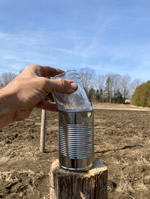

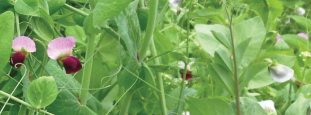


|
Farm update May 8 2022 The last few weeks have been, as is always the case this time of year, busy. The spring is a time of preparation for the coming year and can be a challenge to get the timing right on each of the different vegetables. When you sprinkle in the weather it’s even more interesting. At the beginning of April I as I usually do put a few peas in the field. Peas don’t mind the cooler temps and if we were to have an normal spring they are usually ready by late May early June. They are also quite hardy when it’s a bit cooler than normal as it has been this season. What I find inspiring sometimes is natures ability to be patient. The peas I put in early April just sat patiently in the ground until the temperature and conditions were right and finally sprouted in early May. This means if the timing is as usual on peas we will have them late June early July provided it doesn’t get to warm to fast. Testing testing, 1,2,3 In the greenhouse, we are getting ready for plant deliveries. Due to the cool spring and the price of gas we will be doing one plant delivery day the week of May 15th. Hopefully that will work for everyone who has ordered. Also in the greenhouse we have some lettuce and arugula coming along. I’m hoping to use the greenhouse a bit more through the summer and looking for ways to get the temp down with vents and possibly a fan. It can also be a bit of a stress on our water supply. The current plants in the greenhouse are using 1000L (250g) a day on a bright sunny day. Farm Gate The next few weeks will be tough as a lot has to get seeded or transplanted to make sure we all have food for the winter. I guess I’m not a grasshopper any more.
_______________ As we approach the growing season, it’s time to do an update about the winter and how things are going this spring. The winter, although the same number of days, seemed long. The yo-yo effect of the weather and temperature made things interesting. With temperatures dropping to the -30s it was necessary to adapt and at one point shut down the greenhouse. The snow pilled up which was a good thing on the fields, but on the greenhouse it was a problem. This meant not only shovelling to the door but a meter space all the way around so the snow could slide off. This was done a number of times, with a shovel. The lack of sun in January - seemed more like November - meant that we were using more wood to heat during the day. The big thing is to try to keep the greenhouse through the winter at or around 0. This way when it’s time to get things started it doesn’t take as much to get it up to temperature. By the end of Feb we were ready to get started. Sprouts were again growing and seeding began. The temperature fluctuations were still an issue; and the little propane heater that we use to heat the bench went out one night causing the loss of 10 trays of sprouts, but that too was a learning. The nice days at the end of Feb were also when the tractor repair started - but that’s another novel. Feb turned into March and the winter planning and scheduling turned into the planting and seeding plan. It also saw our first attempt at hiring and running a job ad. Fast forward to the end of April: Going forward, the next week or so will see seeding in the fields; transplanting of greens into covered frames; the seeding of all the cucumbers, squash and melons, along with peas and beans and others. Infrastructually the irrigation system has to be installed, tubing laid and pump tested. All in all things are going, let's say, ok to well. We are still looking for help and are considering looking to the recently retired as our efforts to hire a student have not worked out. We will be trying to do this update on a weekly basis. Please let us know if there is anything you would like to hear about.
Off Grid Sunshine Watering System Year end update Jan 1 2022:
The mistake wasn’t a mistake but a big learning once I recognized it. As mentioned we had our best cucumber crop but probably our worst tomato year. The question I had was, why? First the cucumbers: the irrigation system draws water from a 4000-gallon above-ground swimming pool we use as a reservoir. The solar pump sits on the ground (some of you may see the issue). When the pump is turned on the water is pulled up over the side of the pool, and moves through the pump and into the field. Just after the cucumbers had been planted the pump was turned on - the pool was full - and the pump ran for about 4 hours. When the pool was just under 3/4 full - the pump was turned off. We water late in the day and this is because (if you remember the heat) we are trying to avoid evaporation and to allow the water to soak in as the sun sets and overnight. The next morning I checked the pool to see about watering and it was down to less than a 1/4 full. My first thought was that it was a leak. I walked around the pool numerous times but could not find any water. Then I walked out to the cucumbers and the drip tape was still dripping. The pump was off but the water was still flowing. It hit me that I had syphoned the pool of a lot of water…luckily it went to some of the veg. What does this one overnight watering have to do with a good cucumber and poor tomato crop? Simply, ground moisture. Because of the dry spring there was no water in the ground. You could dig 3, 4, even 6 inches and just have dry soil. When we only watered for the usual 3-4 hours (a typical feeding), the roots would move to the water. And along with that the sun was drawing the water up and the roots were following. How do I know this? When I pulled up a few tomato plants in the fall the root structure was awful. In past years the plants wouldn’t pull with two hands; this time they came out with ease. The overnight watering of the cucumbers put water down deeper than when we did our twice-weekly waterings; then, we were adding to the base. The tomatoes didn’t have the base. One of the learnings is that I will spend the rest of my life learning. Also I’m in the process of ordering a long-shaft soil moisture meter. We will be doing tests this coming spring to make sure the moisture levels are correct before we plant. If that means emptying the pool many times over, that’s what we will do.
The next steps for the system are simple : keep learning, and find or make a reliable supply of water. The plans for a small pond and a couple of cisterns are underway. 2022 is going to be a good growing year because with climate change the biggest learning is adaptability and that we can do. Thank you so much for your help with this project. Please, once COVID is done, stop by the farm. I’ll be happy to show you the system, how it works and everything we are doing. Have a great 2022! ----------------------------------------------------------------- July 2021 Rainy days are a vegetable farm’s days off. This is basically the first real rain event since March and my first real down day. With that I thought I would use some of the time to write an update about the Shine watering system. Thanks to your support, it has already made the difference between having a season and not. I have never seen a spring like this. Because of where the farm is situated, we get less rain than some of the surrounding areas but this spring has been unbelievably dry. In total, up to today, we have received about 13cm (5 inches) of rain. On top of that, the very light snow levels over the winter meant there was very little water in the ground to start with. So what’s happening with the watering system. For those that want a deeper dive
The most important pump in the group is the FuturePump, it's the one that we purchased from India. This pump, if needed, can run all day as long as I’m not standing in front of the solar panel. Hooking it up was quite funny; being from another country the electrical set up was a little different. Once I got it figured out and got it started I stepped back to admire my handy work and the pump stopped. I was like, “oh no, what’s wrong” but as I stepped forward to check the pump it started. Relieved, I stepped back, only to have it stop again. It was at this point I realized I was standing between the solar panel and the sun. The pump is direct to panel; there are no batteries, but the panel has to have light on it. It has been a bit of a learning curve, especially knowing when to go turn the panel based on the sun's position. Nevertheless, the pump is moving water, at full power around 60L (16 gallons) per minute. We will run the pump for approx 2.5 hours at a time per zone to get to the equivalent of 1 inch of rain. Thanks to you and this pump, we have already moved more water and irrigated far better than we did in all of 2020. The Irrigation Method: the main method of irrigation we are using is drip tape. I say main because we are still using watering cans and hose on occasion. The drip tape system works by providing water to only the areas and plants that we want to irrigate. This means we are not watering the walkways or areas to the side of a field that would be covered if we used sprinklers. It also means we are using 1/4 to 1/3 of the water that would be used in a sprinkler method. Additionally, because each line has its own shut off, we can pick and choose what gets watered. If a crop is finished we can shut down those lines. If we have a crop that needs more water eg. cucumbers - we can focus our efforts with the turning of a valve. The system is not perfect but it’s already making a difference. Due to the lack of rain in the spring, we started setting up the system and the difference in the peas between the first zone set up and the second is visible. The peas that got less water are smaller in size, both the plant and the fruit. The Plan and Management:
this tells us how much water has been applied to the ground in a given week and we then know if we have to add more. We need to know three things: how much water each variety of plant needs, how much has fallen and how much the pump is delivering. The first step in this was putting a simple homemade rain gage in the field. After each rainfall I record the amount and from there can decide how much I need to add. The other is understanding the pump and how much it’s delivering and how many tape lines we are running. This allows us to know for how long to run the pump. All in all I’m very pleased with the progress of the system and hope in August to have some Sunday tour/demonstrations of the pump and system,
I’m so very grateful and overwhelmed by all the support we received for this project. Thanks
|
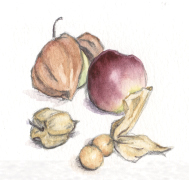

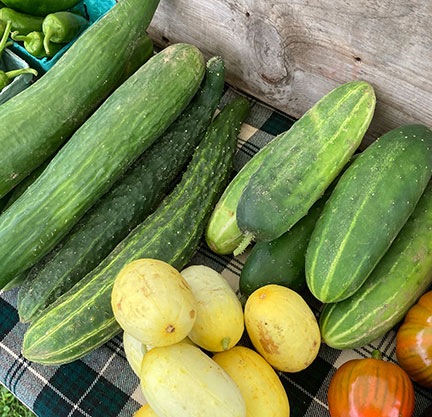 The irrigation system was a success. We had the best cucumber crop we have ever had. This was directly due to the system and a simple mistake I made that turned out not to be a mistake. As you will remember, we had a dry winter in late 2020 into spring 2021. Then there was the spring drought. From mid March until mid June the farm got 12.7 cm (5 inches) of rain, based on my little homemade rain gauge. The average vegetable plant needs 2.5 - 5 cm(1-2 inches) per week, so that’s quite a shortfall. Enter the irrigation system; by tracking the rain I was able to augment with irrigation up to the proper amount. With the fields broken into zones with crops of similar water needs grouped together, I was able to target water. Targeting was necessary due to the limited amount of water available. The pool was being filled every 5 days.
The irrigation system was a success. We had the best cucumber crop we have ever had. This was directly due to the system and a simple mistake I made that turned out not to be a mistake. As you will remember, we had a dry winter in late 2020 into spring 2021. Then there was the spring drought. From mid March until mid June the farm got 12.7 cm (5 inches) of rain, based on my little homemade rain gauge. The average vegetable plant needs 2.5 - 5 cm(1-2 inches) per week, so that’s quite a shortfall. Enter the irrigation system; by tracking the rain I was able to augment with irrigation up to the proper amount. With the fields broken into zones with crops of similar water needs grouped together, I was able to target water. Targeting was necessary due to the limited amount of water available. The pool was being filled every 5 days. 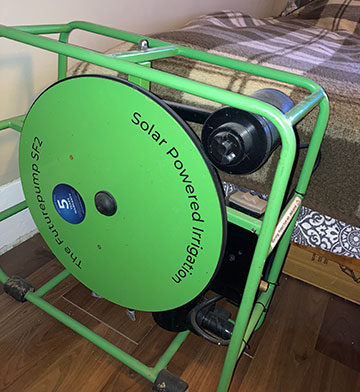 The irrigation system is all packed up for the winter. The solar panels have been re-purposed for the greenhouse over the winter but will be back to pumping water as soon as necessary. The pump is safe and warm; it’s actually covered and at the end of the bed in the spare bedroom so it will be safe over the winter.
The irrigation system is all packed up for the winter. The solar panels have been re-purposed for the greenhouse over the winter but will be back to pumping water as soon as necessary. The pump is safe and warm; it’s actually covered and at the end of the bed in the spare bedroom so it will be safe over the winter. 